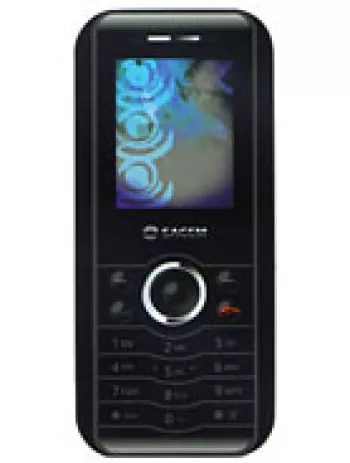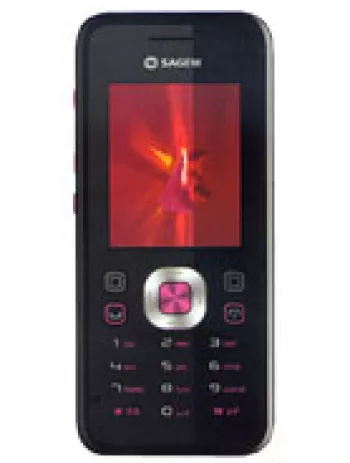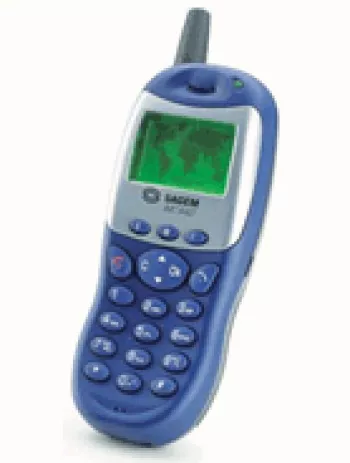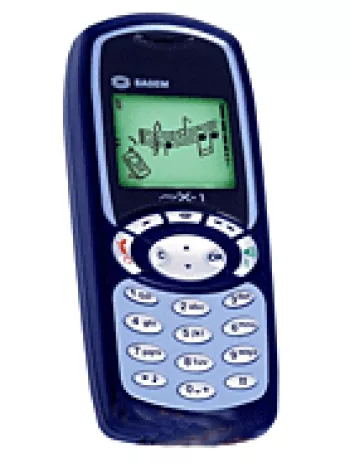
Overview of Sagem my600X
The Sagem my600X is a feature phone that was announced in September 2006. It stands as a representation of the mid-2000s mobile technology, offering basic multimedia capabilities and connectivity options. Though it has been discontinued, exploring its specifications provides insight into the evolution of mobile phones before the widespread adoption of smartphones.
Design and Build
The Sagem my600X features a compact and straightforward design typical of feature phones from its era. With dimensions of 110 x 48 x 16 mm and a weight of 99 grams, the device is lightweight and easy to carry. It houses a Mini-SIM slot, encapsulated in a body featuring a white color option, appealing to those who prefer minimalistic aesthetics.
Display
The phone is equipped with a 1.8-inch TFT display, boasting 256K colors. Although small by modern standards, such a display was quite standard for its time. It features a resolution of 176 x 220 pixels, offering a pixel density of approximately 157 ppi. This display size and resolution were adequate for executing simple tasks and viewing basic multimedia content.
Camera
The my600X is armed with a VGA rear camera, capable of capturing photos and videos. While the 0.3MP sensor is minimal by today's measures, it offered an entry-level photography experience, recording moments as they happened. It also includes a videocall camera, an interesting feature for the era, considering the limitations in network speed and technology.
Network and Connectivity
The device supports GSM and UMTS technologies, providing it with coverage across 2G and 3G bands—specifically GSM 900/1800 and UMTS 2100. With a maximum speed of 384 kbps, users could benefit from basic internet browsing and multimedia messaging. Connectivity options are fairly rudimentary, excluding WLAN and 3.5mm audio jack, but including Bluetooth for short-range wireless data transfer.
Memory and Storage
The internal storage is limited to 16MB, which may seem minuscule today but was typical for feature phones in the early 2000s. It also features a miniSD card slot, allowing users to expand the memory for storing additional photos, contacts, and applications. Phonebook storage and call records are maintained efficiently despite storage constraints.
Battery
The device uses a removable Lithium-Ion battery with a capacity of 1300mAh. This was sufficient to support up to 350 hours on standby and up to 4 hours of talk time, delivering reliable performance for users accustomed to the less taxing battery demands of feature phones.
Operating System and Features
Running on a proprietary operating system typical for feature phones, the my600X supports SMS, MMS, and email, fitting user communication needs. The built-in browser, WAP 2.0/xHTML, allows for basic web browsing. Despite its limitations, it supports Java applications (MIDP 2.0), which means users could run Java-based games and apps, broadening the phone’s functionality to a larger extent.
Sound and Multimedia
The absence of a loudspeaker and 3.5mm audio jack could be seen as limitations, yet the device supports downloadable polyphonic and MP3 ringtones. The sound capabilities are more tailored towards calls and alerts rather than multimedia consumption.
Market Impact and Legacy
While Sagem was not as globally dominant as other brands, the my600X held its ground by offering a reliable and straightforward mobile experience. It caters to an audience that valued functionality and reliability over complex features, serving as a stepping stone between basic monochrome phones and more advanced smartphones.
Conclusion
Sagem my600X encapsulates the technological limits and consumer needs of its time. While it may not compete with today's smartphones, its significance lies in its contribution to mobile technology's evolution. Individuals seeking a nostalgic, simple mobile experience or who appreciate exploring past tech innovations may find the my600X a captivating device to study.
Key Features of Sagem my600X
- Supports both GSM and UMTS technologies.
- Equipped with 3G bands for UMTS 2100, offering internet speed up to 384 kbps.
- Compact and lightweight design, weighing only 99 g.
- 1.8-inch TFT display with 256K colors for better color representation.
- Expandable storage with a miniSD card slot.
- VGA main camera with video capabilities.
- Supports Bluetooth connectivity for wireless data sharing.
- Provides essential messaging options including SMS, MMS, and Email.
- Comes with WAP 2.0/xHTML browser for basic internet surfing.
- Java MIDP 2.0 support for downloadable games and applications.
- Decent battery life with up to 350 hours standby time and 4 hours talk time.
Disadvantages of Sagem my600X
- Discontinued product, limiting support and availability of spare parts.
- Small display size with low resolution (~19.3% screen-to-body ratio).
- Limited internal memory of 16MB which may require frequent clearing or reliance on miniSD for storage.
- Basic VGA main camera with no advanced features.
- Absence of loudspeaker; limited sound output options.
- No 3.5mm headphone jack, which limits compatibility with standard audio accessories.
- No WLAN capability, restricting internet access to mobile networks only.
- No GPS positioning capabilities.
- No FM radio feature for listening to local broadcasts.
- Proprietary USB interface, which may require special cables or adapters.
- Absence of advanced sensors for enhanced functionality.
- Relatively short talk time of up to 4 hours may limit usability for longer conversations.

View Also
More Phones
All Rights Reserved +13916 Phones © Mobilawy 2025

























